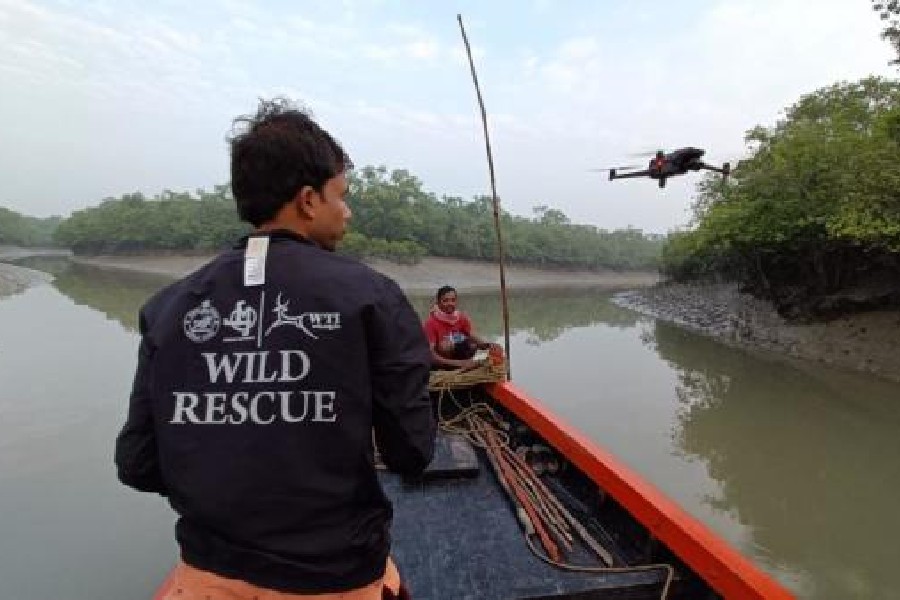A drone equipped with a thermal camera had been looking for a tiger in a small forest pocket in the Sunderbans for the past few days.
Forest officials said it was the first time that such a device was used in the mangrove forests. The drone, used at night, clicked multiple pictures of prey like wild boar and deer but the big cat remained elusive. However, it could be used for future expeditions, said officials.
Thermal drones are unmanned aerial vehicles (UAVs) equipped with a thermal camera. The camera is designed to pick up infrared radiation emitted by various objects. They relay real-time images from the terrain they fly over.
Thermal drones are very helpful in search and rescue operations. They have a range of applications, including wildlife.
The drone was brought from Keonjhar forest division in Odisha — where it is used to prevent man-elephant conflicts — to Dhanchi, a small island by the Thakuran river near Patharpratima. It comprises a forest that is spread across a little over 30sqkm.
The forest is accommodating a full-grown male tiger, forest offices believe.
The big cat is suspected to have strayed from the larger Dhulibhasani forest — a known tiger habitat in the Ramganga range of the South 24-Parganas forest division. Exactly a week ago, pugmarks were found near Sridharpur village, on the other side of Thakuran river.
The pugmarks led a team of foresters to Dhanchi, the island on another bank of the same river.
“We had requested the Odisha forest department for the drone. Normal optical range drones have limited efficiency in the mangrove forests, which are so dense that the cameras cannot see beyond the green cover. In the future, we have plans to procure such thermal drones for the Sunderbans,” said Debal Ray, the chief wildlife warden of Bengal.
The Wildlife Trust of India had provided a normal drone to the South 24-Parganas forest division in September. The same NGO has provided the thermal drone to Keonjhar.
A drone operator from Keonjhar reached the Sunderbans on November 4 and spent the next couple of days there, assisting the local team to look for the tiger. It could not trace the tiger but the images clicked have helped the foresters to have a sense of the habitat.
“This forest is not a known tiger habitat. But it has a decent prey base of deer and wild boar. It can accommodate a tiger. Our men who are in the forest have located multiple pugmarks. Based on the information, we have set up trap cameras. Trap cages are already in place,” said Milan Mandal, the divisional forest officer of the South 24-Parganas forest division, who is leading the operation to trace the tiger.
Souvik Ghoshal, the man who came from Keonjhar with the drone, said it could cover 1.5km at a stretch at night. “It was not used in daytime because under sunlight all objects have relatively higher surface temperature. It is difficult to differentiate between objects,” said Ghoshal, who returned to Keonjhar on Tuesday.






